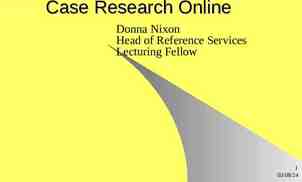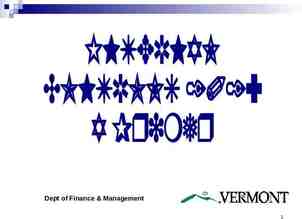2-1. Key Sanitation Condition No. 2 Condition and cleanliness of
20 Slides371.50 KB
2-1. Key Sanitation Condition No. 2 Condition and cleanliness of food contact surfaces 2-2. Food Contact Surface: “Those surfaces that contact human food and those surfaces from which drainage onto the food or onto surfaces that contact the food ordinarily occurs during the normal course of operations” (GMP, 21 CFR 110.3). Typical food contact surfaces include utensils, knives, tables, cutting boards, conveyor belts, ice makers, ice storage bids, gloves, aprons, etc.”
2-3. Goal: Monitoring should provide assurance that food contact surfaces including gloves and outer garments are properly designed, constructed and maintained to facilitate sanitation, and that they are adequately and routinely cleaned and sanitized.
2-4. What to Monitor: Condition of the food contact surfaces; Cleanliness and sanitation of food contact surfaces; Type and concentration of sanitizers(s) used; and Gloves and outer garments which might contact food are clean and in good condition. 2-5. How to Monitor: Visual Inspection - Surfaces in good condition; Surfaces cleaned and sanitized; and Gloves and outer garments clean and in good repair. Chemical Testing - Sanitizer concentration (test strips or kits). Verification Checks - Microbial tests of surfaces (optional).
2-6. Typical Corrections: Observation: Sanitizer concentration from dispenser varies day to day. Correction: Repair or replace chemical proportioning equipment and train cleaning crew in its proper use. Observation: Juncture of two tables tops trap food debris Correction: Separate tables to allow access for cleaning. Observation: Table work surfaces show signs of corrosion Correction: Refinish or replace damaged equipment and switch to less corrosive cleaning compound.
2-9. General Requirements for Food Contact Surface Safe Material - Non-toxic (no leaching of chemicals); Non-absorbent (can be drained and/or dried); Resist corrosion; and Inert to cleaning and sanitizing chemicals. Fabrication - Can be adequately cleaned and sanitized; and Smooth surfaces including seams, corners, and edges.
2-11. Food conditions that can influence choice of appropriate food contact surfaces Pickled fish (e.g., herrings, mackerel) Salt cured fish products (e.g., smoked fish, brine shrimp) Strongly corrosive; High acidity and salts Moderately corrosive; Medium acidity and salts Fresh and refrigerated fish (e.g., peeled shrimp, fillets, shucked oysters, picked crab meat, surimi) Weakly corrosive, Low acidity Fish powders, Dried fish (e.g., freeze dried shrimp, fish protein concentrate) Non-corrosive Frozen Fish (e.g., IQF frozen shrimp) Non-corrosive
2-12. Food contact surface materials which normally should be avoided if feasible: Wood (microbial concerns); Ferrous metals (corrosion concerns); Brass (variable corrosion resistance and product quality concerns); and Galvanized metal (corrosion and chemical leaching concerns). Note: Certain state regulations may prohibit use of these materials as food contact surfaces in processing operations. AVOID !
2-13. Storage of Clothing and Gloves: Store clothing and gloves in clean and dry locations; Ensure that clothing and gloves are not exposed to splash, dust or other contaminants; and Store clean garments separately from soiled garments and gloves.
2-14. Design and Install Food Contact Equipment to: Drain and not entrap soils; Provide access for cleaning and inspection; and Withstand plant environment.
5 Steps! 2-15. 1. 2. 3. 4. 5. Five Steps of Cleaning and Sanitizing: Dry-clean; Pre-rinse; Detergent application, then; Post-rinse; and Sanitizing.
2-16. Types of Detergents: General Purpose (GP); Alkaline; Chlorinated (chlorinated alkaline); Acid; and Enzyme
2-17. A detergent’s effectiveness varies with: Contact time; Temperature; Physical disruption (scrubbing); and Water chemistry.
2-18. Detergent application methods: Soak tanks; Foam; Automated systems; CIP (clean-in-place); and parts washers Manual (pails). 2-19. Example Cleaning Procedures: A processor applies an alkaline foam detergent to equipment every day. The detergent is allowed to stand and then is rinsed without scrubbing. Actual scrubbing with brushes or pads takes place only once each week.
2-20. Physically removing soils: Brushes -- proper stiffness; Pads -- proper cutting properties; and Pressure spray -- moderate pressure.
2-21. Pads, brushes and brooms should be dedicated to tasks for which they are designed: Optimizes cleaning effectiveness; and Minimizes cross-contamination between areas of the plant.
2-22. Cleaning aids which retain water, such as sponges, wiping cloths and mops should not be used for routine cleaning in processing plants.
5 Step ! th 2-23. 1. 2. 3. 4. 5. Sanitizing follows proper cleaning: Dry-clean; Pre-rinse; Detergent application; Post-rinse; Sanitizing
2-24. Sanitizer Mixing and Application: In-line proportioners/applicators; Station proportioners/applicators; Hand and footbath sanitizers; Foamers; Tank sprayers (low pressure); and Dips.
2-25. Sanitizer Concentrations Commonly Used Plants. Sanitizer Food Contact Surface Non-Food Contact Surfaces Chlorine 100-200* ppm 400 ppm Iodine 25 * ppm 25 ppm Quats 200* ppm 400-800 ppm Chlorine dioxide 100-200*† ppm 100-200† ppm Peroxyacetic acid 200-315* ppm 200-315 ppm in Food Plant Water 3-10 ppm 1-3† ppm The higher end of the listed range indicates the maximum concentration permitted without a required rinse (surfaces must drain) † Includes mix of oxychloro compounds Source: 21 CFR 178.1010
2-27. Periodic Confirmations for Sanitization: Microbiological Enumeration; Contact plates Swabs; and Luminometry.

























